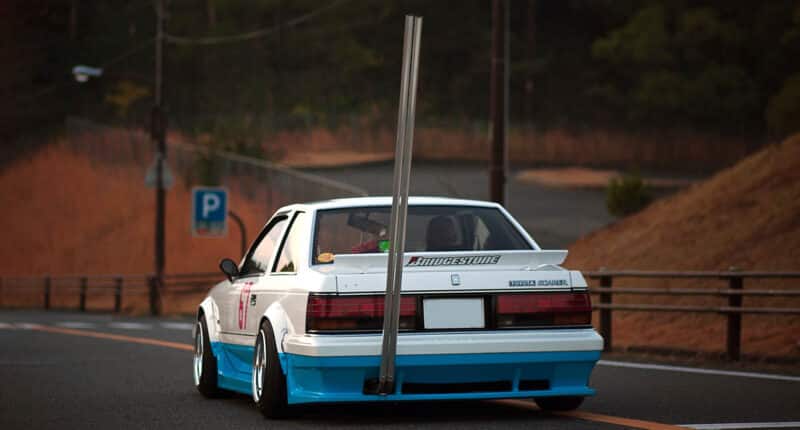Few things in the automotive world can be as confusing as the various Japanese subcultures and tribes.
Zokusha is one of those terms that every JDM fanatic has heard of, but it seems almost impossible to nail down a proper definition.
A quick Google search will tell you that zokusha is a combination of the words “zoku”, which means tribe or clan, and “sha”, which means car.
However, some will tell you it’s a combination of “zoku” and “kyusha”, which means modified old car (shakotan).
Either way, it should, technically, mean something like “car tribe” or “modified classic car tribe” — except zokusha only refers to the cars themselves, not the tribes.
In Japan, the word zokusha is not used when talking about those who drive old modified shakotan cars, it’s only used when you talk about the cars themselves.
Zokusha, or zokusha style, is also used as a catch-all term when talking about shakotan, kaido racers, and so on — you may say it’s the more correct term for what many JDM enthusiasts refer to as bosozoku cars.
In this article, we’ll take a closer look at zokusha meaning, cars, and culture, and try to clear up some common misconceptions.
What Is Zokusha Culture?
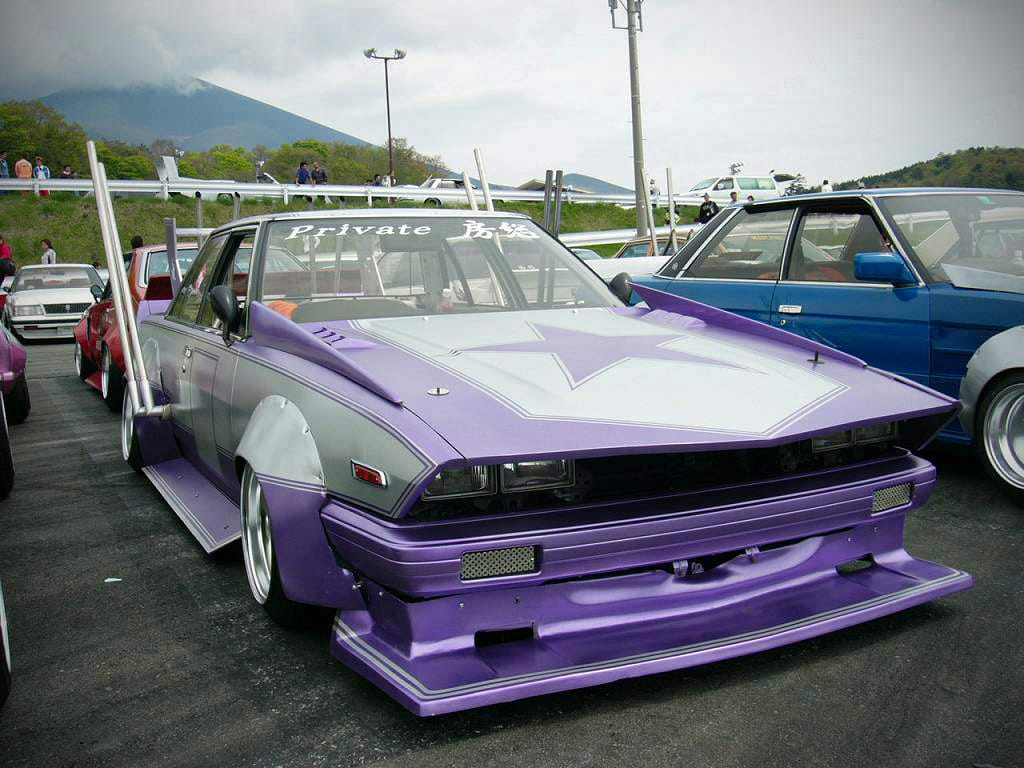
Zokusha style essentially refers to classic JDM cars that have been modified in a certain way. Acceptable zokusha cars tend to be ones made from the late 1960s to the late 1990s.
Zokusha cars can range from “mild” to outrageous, but if you want to build one of these strangely appealing four-wheeled wonders, there are some “rules” you should adhere to — after all, they are inspired by classic silhouette race cars from the 1970s and ‘80s.
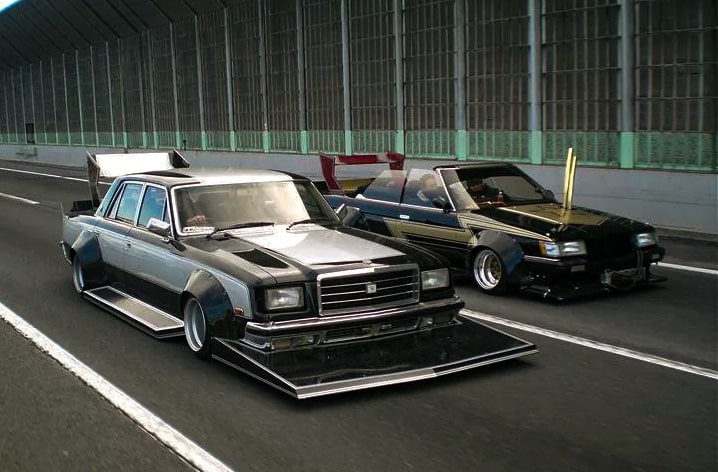
You need to fit a lip or spoiler at the front. If you’re going for a full-on kaido racer-look, you’ll probably want it to be massive — a so-called zokusha spoiler.
The hood can be left stock, but some will extend it along with the fenders for that true “shark nose-inspired” race car look. Hood vents, louvers, bulges, and fins also add authenticity.
At the back, there needs to be some kind of wing or spoiler, you can go with just a Gurney flap, a wing that’s taller than the car itself, or even combine the two. After all, downforce is important.
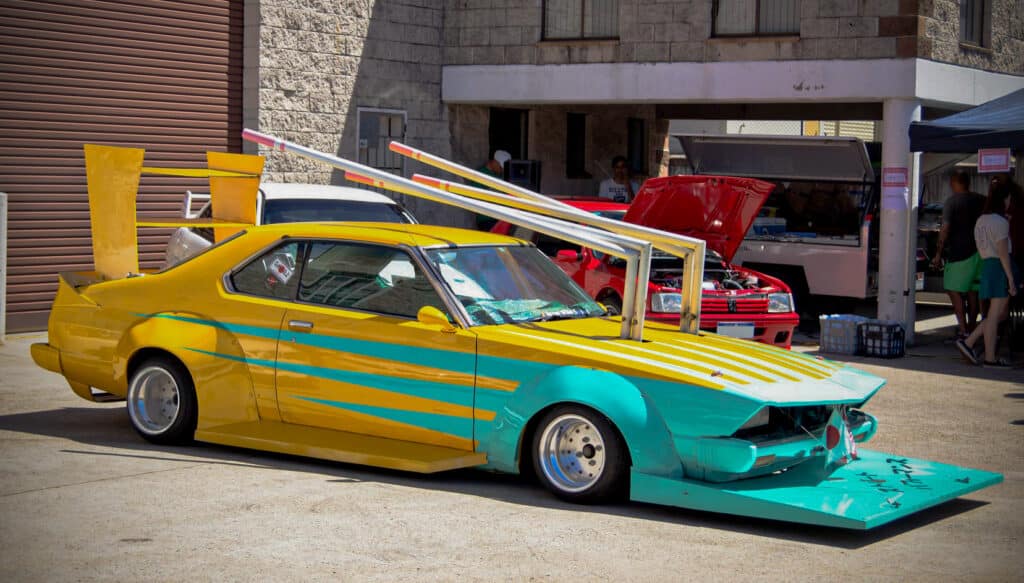
Another thing you’ll notice on the back is the infamous “zokusha muffler” — the takeyari exhaust pipes that usually have lots of bends and angles, and are commonly painted in bright colors.
A tsurikawa ring is another must-have mod that’s usually found dangling under the car’s rear end.
A proper zokusha car must obviously be slammed to the ground, and a set of classic JDM deep dish wheels should be found nestled underneath the overfenders.
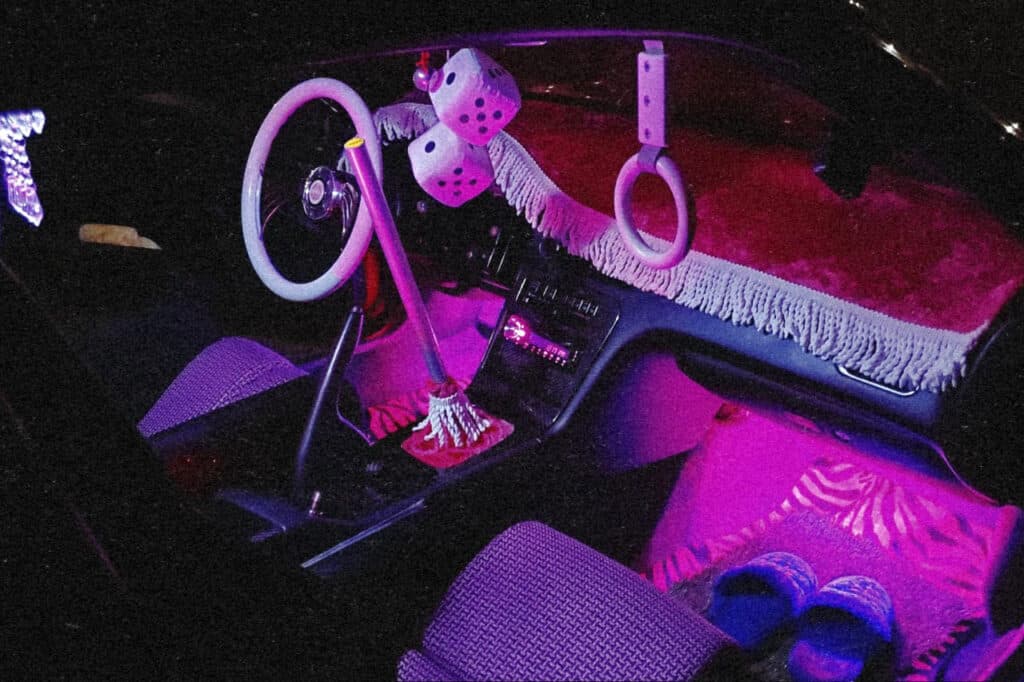
To finish off the build, a cool classic race car-inspired paint job does the trick on the outside, and the interior usually has a wooden aftermarket steering wheel, and some kind of eye-catching shift knob.
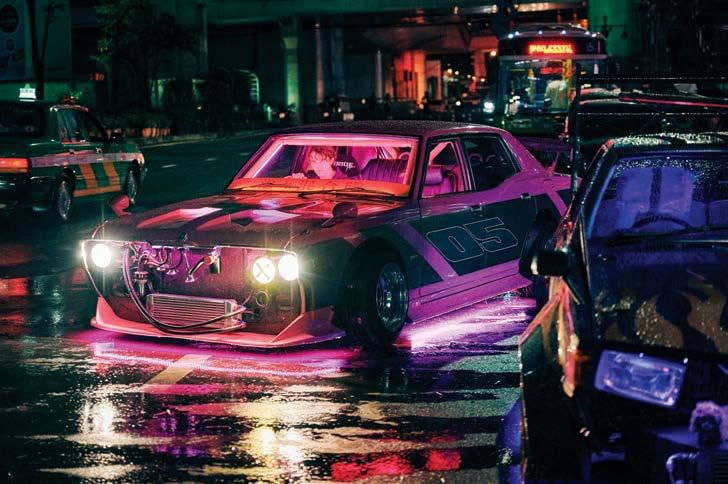
You may even see these cars running what westerners lovingly refer to as zokusha purple light, or purple kaido racer lights.
Purple is used as a caution light in Japan, so people sometimes include them in their build to seem extra obnoxious. Perhaps that’s why some people refer to zokusha builds as bosozoku cars?
Zokusha vs Bosozoku: Difference Explained
Bosozoku has become something of an umbrella term for outrageously modified classic cars. However, that’s not the correct use of the word, and some might consider it disrespectful.
The original meaning of bosozoku refers to a group of young Japanese hooligans riding loud, modified motorcycles, causing havoc, and getting in trouble with the law.

The Bosozoku biker scene is practically going extinct these days, as most people try to distance themselves from the bosozoku stigma and prefer to be called kyusha-kai.
However, it can be argued that certain aspects of their style were adopted by the car community, such as the loud exhausts, over-the-top body modifications, and bright paint jobs.
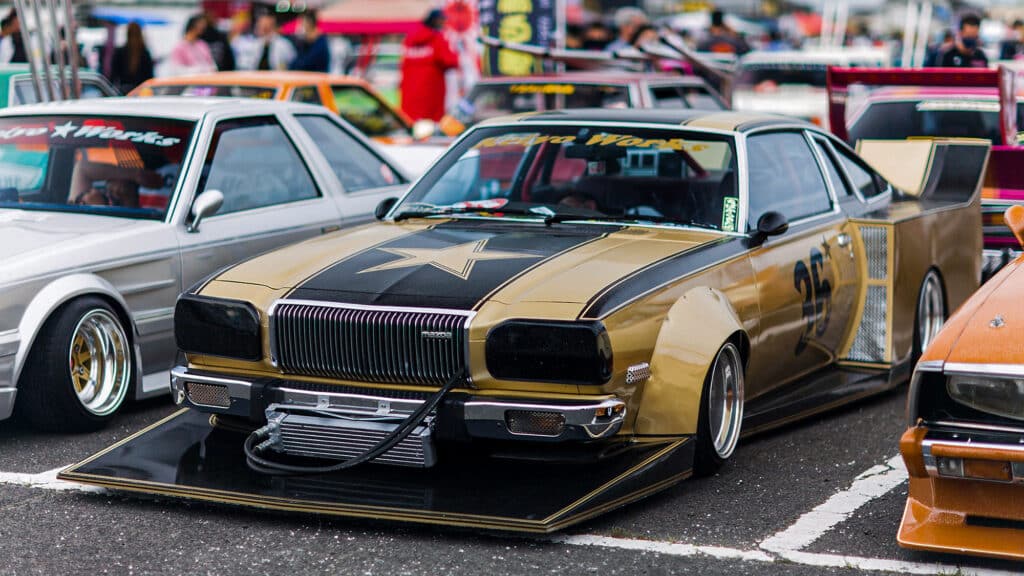
That’s why people often refer to these modified cars as bosozoku, but zokusha or kaido racer would be more correct terms to use, as they don’t have anything to do with the bikers.
Aesthetic or Nothing
Zokusha cars are not for classic car enthusiasts who prefer to keep things stock and keep a low profile, but we’d be hard-pressed to find a more suitable style for extroverted attention-seekers.
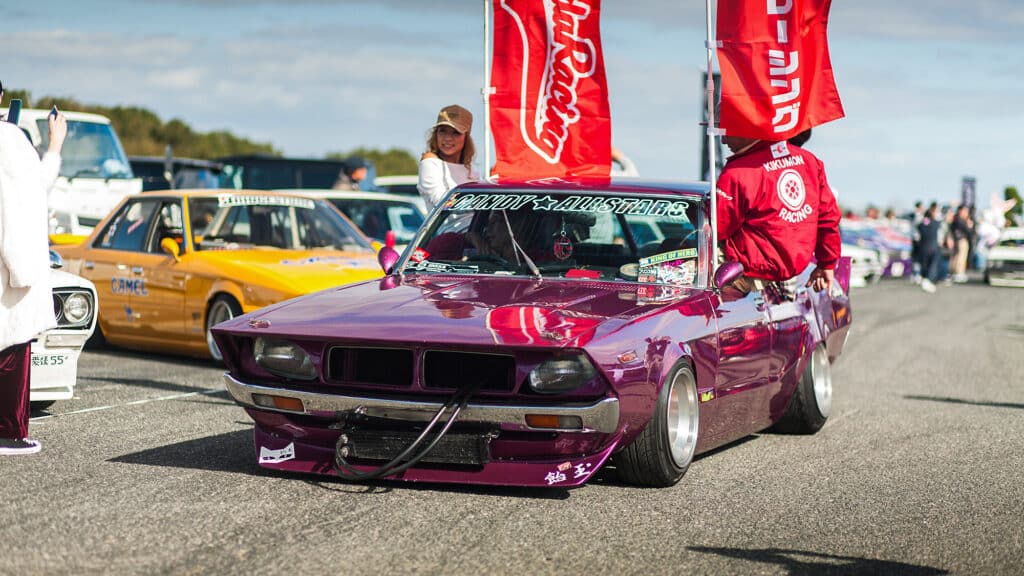
The zokusha style has gained followers from around the world in recent years, and cars are not just imported from Japan, JDM enthusiasts in every part of the world are actually building their own zokusha cars.
If you want to go down this route, get your hands on a classic Japanese car, and scour the internet for inspiration.
Just remember to not take it too seriously, have fun with it, and create a head-turner that’ll be a hit on the next Cars & Coffee.
Would you drive one of these with the windows down? Let us know by leaving a comment below!
